|
Emeritus
Reviews 28
Approval 98%
Soundoffs 21
News Articles 11
Band Edits + Tags 12
Album Edits 315
Album Ratings 833
Objectivity 67%
Last Active 05-11-22 11:58 am
Joined 09-17-08
Review Comments 16,303
| Angel's Beer Encyclopedia
Haven't done any food or alcohol related lists lately, so consider this making up for lost time. Should be a crash course on becoming a certified beer nerd. | | 1 |  | Nekrasov
The Form of Thought from Beast
Pilsner - Pilsners are light lagers, one step away from Bud. But it's a big step. Pilsners use lots of hops and all malted barley (most of the big, American lagers cut those grains with the cheap stuff: rice and corn). They're sweet, rich, and bitter, but really light and super bubbly. The style was invented in the Czech Republic and the original - Pilsner Urquell - is still around and easy to find, but the grocery store six-pack is a world away from what you get in Prague. That's because pilsners are best - and traditionally speaking - served unfiltered and unfiltered beers are fragile exports. With pilsners, freshness is key, and, the hallmark of a fresh pilsner is the dense, white head. Angel recs: Trumer Pils, Spaten Pils, Uber Pils | | 2 | 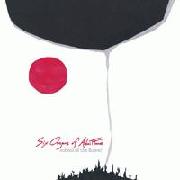 | Six Organs of Admittance
School of the Flower
Wheat Beer - Wheat beer or weissbier or witbeer or weizen - all the names pretty much refer to the same thing. Belgians call it witbeer and tend to have more fun with spices like coriander and orange peel. Germans call it weissbier or weizen. Because the beers are usually under-hopped, or not hopped at all, their flavors are subtle. Bubbly, sweet, smooth, they?re sort of the go-to when you need something crisp and refreshing. The clean flavors and high carbonation make a wonderful accompaniment to all those greasy delights down at your nearest bar or pub of merit. Of course, there are some exceptions, made by brewers who use the style's extra-low hoppiness to emphasize other flavors, particularly from funky, unconventional yeasts. Exotic spice blends also come into play, so don?t be surprised if you get a background profile of lavender amid the almost effervescent citrus notes. Angel recs: Jolly Pumpkin Oro de Calabaza, Hitachino Nest, Allagash White | | 3 |  | Svarte Greiner
Knive
Scottish Ale - It's hard out there for a hop-hater. You might as well come out against alcohol altogether - or say the bubbles in foam hurt your nose you big vagina. But even though hops are an essential part of beer, and even though they're used with such abandon in the US, it's possible to find a great beer that doesn't taste as bitter as sucking on a tea bag. While the hop-head Mecca is the west coast, the promised land for hop-ophobes is Scotland. Malty, sweet, smooth, and with a warming, boozy finish, Scotch ales are full of flavor, but light on hops. The story goes that Scotland has always been too chilly to grow hops on a large scale, and instead of asking the damn English for theirs, the Scots made do with what they had. More often than not, that meant using next to no hops at all. Sometimes brewers would toss in heather flowers instead. That tradition goes back some 4,000 years - heather ales and meads were ceremonial drinks for the Celts, probably helped along by a hallucinogenic moss that can grow on the flowers. Pretty badass, right? Today, Scottish ales are typically amber to ruby-colored, toffee-sweet, mellow, and rich. Some can be a little smoky if the brewery uses grains cured over burning peat. American versions, of course, are way stronger, but instead of amping up the hop notes, brewers here emphasize malt. The English can keep their bitters and pales; this beer's for the kilt-clad. No hops, no problem. Angel recs: Belhaven Scottish Ale, Traquair?s House Ale, Great Divide Claymore | | 4 | 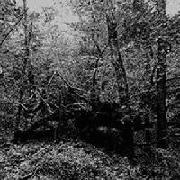 | Guapo
Black Oni
American Wild Ale - Sometimes Belgian influenced, American wild ales are ales that are introduced to "wild" yeast or bacteria. This introduction may occur from oak barrels that have been previously inoculated, pitched into the beer, or gained from various "sour mash" techniques. Regardless of which and how, these little creatures often leave a funky calling card that can be tough to get into. Angel recs: Russian River Valley Brewing Co. Beatification, Jolly Pumpkin La Roja, Allagash Interlude | | 5 |  | Ascend
Ample Fire Within
Amber Lager - Amber lagers are a vaguely defined style of lager much favored by US lager brewers. They are darker in color, anywhere from amber to copper hued, and generally more fully flavored than a standard pale lager. Caramel malt flavors are typical and hopping levels vary considerably from one brewery to the next, though they are frequently hoppier than the true Vienna lager styles on which they are loosely based. Angel recs: Rogue Maierfest Lager | | 6 | 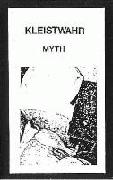 | Kleistwahr
Myth
Dark Lager/Dunkel - Dunkel is the original style of lager, serving as the forerunner to the pale lagers of today. They originated in and around Bavaria, and are widely brewed both there and around the world. This is often what the average consumer is referring to when they think of dark beer. At their best, these beers combine the dry-ish chocolate or licorice notes associated with the use of dark roasted malts and the roundness and crisp character of a lager. Examples brewed in and around Munich tend to be a little fuller-bodied and sometimes have a hint of bready sweetness to the palate, a characteristic of the typical Bavarian malts used. Angel recs: Mother Earth Brewing Dark Cloud, Lakefront Brewery Eastside Dark, Church Brew Works Pious Monk Dunkel | | 7 |  | The Best Pessimist
To Whom It May Concern
Black/Schwarz Beer - Originally brewed in Thuringia, a state in eastern Germany, these lager style brews were known to be darker in color than their Munich counterparts. Often relatively full-bodied and hardly ever with a low ABV, these beers classically feature a bitter chocolate, roasted malt note and a rounded character. Hop accents are generally low. This obscure style was picked up by Japanese brewers and is made in small quantities by all of Japan?s major brewers. Schwarz beers are not often attempted by US craft brewers. Angel recs: Kapuziner Weisbier Schwarz | | 8 | 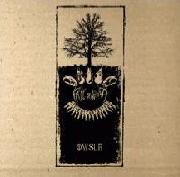 | Fall of Efrafa
Owsla
Marzen - The classic amber to red lager which was originally brewed in Austria in the 19th century has come to be known as the Vienna style. These are reddish-amber with a very malty toasted character and a hint of sweetness. This style of beer was adapted by the Munich brewers and in their hands has a noted malty sweetness and toasted flavor with a touch more richness. The use of the term Marzen, which is German for March, implies that the beer was brewed in March and lagered for many months. On a label, the words "fest marzen" or "Oktoberfest" generally imply the Vienna style. Oktoberfest beers have become popular as September seasonal brews among US craft brewers, though they are not always classic examples of the German or Austrian style. Angel recs: Heavy Seas Marzen, Paulaner Oktoberfest, Great Lakes Oktoberfest | | 9 | 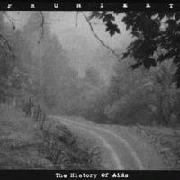 | Prurient
The History of AIDS
Bock - Bocks are a specific type of strong lager historically associated with Germany and specifically the town of Einbeck. These beers range in color from pale to deep amber tones, and feature a decided sweetness on the palate. Bock styles are an exposition of malty sweetness that is classically associated with the character and flavor of Bavarian malt. Alcohol levels are typically pretty potent. Hop aromas are generally low, though hop bitterness can serve as a balancing factor against the malt sweetness. Many of these beers? names or labels feature some reference to a goat. This is a play on words in that the word bock also refers to a male goat in the German language. Angel recs: St. Niklolaus Bock Bier, Aass Bock, Anchor Bock Beer | | 10 |  | Nuit Noire
Black Form
Maibock/Pale Bock - Maibocks are medium to full-bodied lagers with a wide range in alcohol content.As its name would suggest, this is a bock style that traditionally makes a spring appearance in May as a celebration of a new brewing season. They conventionally have a less assertive character than other bock offerings later in the year. The color of pale bocks can vary from light bronze to deep amber and they are characterized by a sweet malty palate and subtle hop character. Angel recs: Rogue Dead Guy Ale | | 11 | 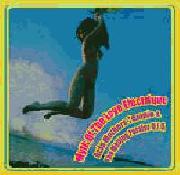 | Acid Mothers Temple
Myth of the Love Electrique
Doppelbock - Another subcategory of bocks, doppelbocks are extra strong, rich and weighty lagers characterized by an intense malty sweetness with a note of hop bitterness to balance the sweetness. Color can vary from full amber to dark brown and alcohol levels are often potently high. Doppelbocks were first brewed by the Paulaner monks in Munich. At the time, it was intended to be consumed as "liquid bread" during Lent. Most Bavarian examples end in the suffix -ator, in deference to the first commercial example which was named Salvator (savior) by the Paulaner brewers. Angel recs: Schneider Aventinus | | 12 | 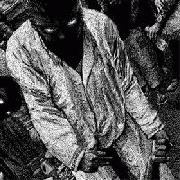 | Overmars
Born Again
Eisbock - The mack daddy. This is the strongest type of bock. It?s made by chilling a doppelbock until ice is formed. At this point, the ice is removed, leaving behind a brew with a higher concentration of alcohol. This also serves to concentrate the flavors, and the resultant beer is rich and powerful with a pronounced malt sweetness and a warm alcoholic finish. In other words, not for the faint of heart. Angel recs: Kulmbacher Eisbock, Schloss Eggenberg Urbock Dunkel Eisbock | | 13 |  | Ildjarn
Hardangervidda
IPA - IPAs have been around for quite some time, originating in England, but they?ve only recently reached heightened levels of popularity thanks to America?s west coast breweries. The name comes from the style of pale ale England exported to India in the 1800s and eventually gained notoriety in its country of origin. IPAs are pale and crisp but well-hopped and generally have distinct flavor for such a light, refreshing beer. Angel recs: Marin Brewing Company IPA, Dogfish Head 120 Minute IPA, Pliny the Elder | | 14 | 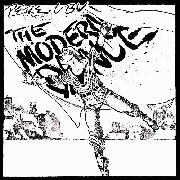 | Pere Ubu
The Modern Dance
Black IPA - Think a three-thousand-mile flyover buffer keeps you East Coasters immune from the flannel-clad whims of the Northwest? Not so fast, chief. Brewers have been darkening light beers for a while, but the latest out of Portland is a new take on the style that put the West Coast on the beer map in the first place. What were first termed as ?Cascadian dark ales? (sounds perfect for those beardies from Wolves in the Throne Room), are now being called black IPAs. Commonly, classic IPA hops (the citrus-y stuff) are still used. The difference is the richer grains: toasted Munichs and crystals, the stuff normally found in brown ales, porters, and dark lagers. Steeped in cold water and mixed with a touch of protein-heavy oats, they give the beer body without any tannic bitterness. The hops bring enough bite on their own. Angel recs: Deschute Hop in the Dark, Stone Sublimely Self-Righteous Ale, Pyramid Discord Dark Ale | | 15 | | Barn Owl
Conjurer
Lambic - Lambics are a very distinctive type of beer brewed only in the Pajottenland region of Belgium (southwest of Brussels) and in Brussels itself at the Cantillon brewery and museum. Lambic is now mainly consumed after refermentation, resulting in derivative beers. Unlike conventional ales and lagers, which are fermented by carefully cultivated strains of brewer's yeasts, lambic beer is instead produced by spontaneous fermentation: it is exposed to the wild yeasts and bacteria that are said to be native to the Senne valley, in which Brussels lies. It is this unusual process which gives the beer its distinctive flavour: dry, vinous, and cidery, usually with a sour aftertaste. Try serving this instead of champagne at parties to be cutting edge. Angel recs: Cantillon Iris | | 16 | 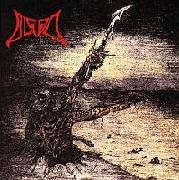 | Blood
Impulse to Destroy
Dortmunder - Well balanced, smooth, and refreshing, Dortmunders tend to be stronger and fuller than other pale lagers or Munich Helles styles. They may also be a shade darker and a touch hoppier. The style originates from the city of Dortmund in northern Germany. Dortmunder Export came about during the industrial revolution, when Dortmund was the center of the coal and steel industries, and the swelling population needed a hearty and sustaining brew. Today, the term Dortmunder now widely refers to stronger lagers brewed for export, though not necessarily from Dortmund. They?re tough to find even in the homeland, but thankfully craft breweries are starting to make them common fare around here. Angel recs: Great Lakes Dortmunder Gold | | 17 | 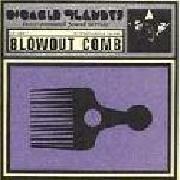 | Digable Planets
Blowout Comb
Flemish Red - Even brewers will tell you: they don't make beer. Yeast makes beer. For every sip, thank the tireless microbes who chomped through gallons of sweet, grainy wort and spit it back out as delicious booze. Usually, brewers go out of their way to make sure the yeast can work alone and undisturbed?some breweries are as sterile as germ labs, and you have to wear bio-suits just to get a tour. But others don't care, and their apathy is your gain. When regular old saccharomyces cerevisiae is joined by other critters like lactobacillus and acetobacter, things get pretty funky. The first is plain brewing yeast. It gives its own spicy or fruity flavors, especially the Belgian varieties, but nothing like the sourness of lactic acid bacteria or the vinegary bite of acetobacter. Those flavors are verboten in most beers, but they give sour ales like Flemish reds their character. Rodenbach makes the classic, and has since 1821. Their red is a blend of two beers, one made fresh and one that's been aged for two years in oak barrels. (The Original has less aged beer than the Grand Cru.) The aged beer picks up all the weird bacteria hanging out in the wood and adds an alcoholic warmth. The young beer is sour and sweet. Put them together and you get a beer that's rich and fruity, but with a sharp, vinegary tang. If lambics feel like one prissy step away from Mike's Hard cherry soda, this should help you get your testicles back. | | 18 | 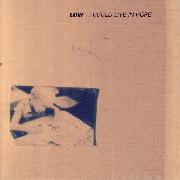 | Low
I Could Live in Hope
Stout - Clinging to Guiness because you think it puts you a step above PBR chugging hipsters? Don?t kid yourself. That stuff?s like the Budweiser of stouts - available anywhere and the bottom of the barrel as far as taste goes. Real stout has some real flavor to back up that motor oil consistency. Whether it be chocolate or coffee, there tends to be dark flavored notes in the midnight-black beer. That doesn?t mean they?re sweet, though. Quite the contrary. Think bitter and earthy like raw cocoa and black coffee. A lot of the best stouts have a nice creamy finish to go with these flavors, making them a great dessert beer and even delicious with ice cream (with it or on it). Angel recs: Stone Imperial Russian Stout, Hitachino Lacto Stout | | 19 | 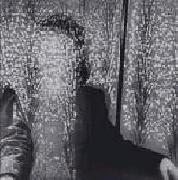 | Zelienople
His/Hers
Coffee Stout - Most stouts and porters have hints of coffee already from the darker, more highly roasted malts they use. The problem is when brewers try to amp up those notes, forgetting that coffee's best flavor is its slightly bitter, solid earthiness and instead loading their beers with tinny, superficial aromas or Frappuccino-level sweetness. That shit?s not beer; it's gas station Folgers with ten sugars. Full of strong malts, stouts and porters can be fairly sweet, and a hint of coffee can be just the thing to balance them out. The key is strong coffee, used sparingly, not the other way around. Most breweries just toss in some beans as they're brewing, but a very few actually mix liquid coffee in with the beer. It's more work, but it's easier to regulate the flavor. Using brewed coffee means you get all the nuanced flavors of the beans, not just their aroma. You can act like a coffee snob and a beer snob in one drink, and it'll keep you awake for another round. Angel recs: Coffee Stout - Lagunitas Cappuccino Stout, Founders KBS, Great Divide Espresso Oak Aged Yeti Imperial Stout | | 20 | 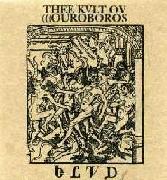 | Thee Kvlt ov (((Ouroboros
Blvd
Barleywine - So, you're into beer. You've worked your way up the IPA ladder from classic Sierra Nevada to Lagunitas to the 120 Minute, telling yourself the one-note shrieks of bitter hops are what real beer is all about, man - the louder, the better. Enter barleywine. Rich, but not as dark as stouts or porters. Complex, with flavors like fruits and caramel that you won't find in any other beers. And super, super strong, usually around 10% alcohol. Yes, order it at a well-stocked bar and it'll probably come in one of those frou-frou goblet-y glasses, but it should, really. Sip slow, even if you don't want to. It has wine in the name for a reason. Barleywines are warming and refreshing at the same time - perfect for spring - but they can still hit hard. Angel recs: Stone, Uinta, Smuttynose | | 21 |  | Camille
Le Fil
Rauchbier - Bacon-flavored beer: How could it not be awesome? Rauchbier is a little-known German style made from smoked malts, meaning the grains are cured over burning beech wood before they're brewed. Though a couple US breweries make smoked beer, the two most traditional varieties come from Bamberg, a kind of brewer's Shangri-La in central Germany. Brewing goes back a thousand years there: a population of only about 70,000 gets to share nine breweries, two malting plants, and even a factory that makes brewing equipment. The two breweries specializing in smoked beer are Spezial and Schlenkerla. Schlenkerla is the only one available in the US for now. (The name, apparently, means something like wobbly or crooked - a reference to the brewery's hunchbacked founder, crippled by a falling beer barrel as the practically required legend has it.) Schlenkerla's smoked beers come in two main varieties: a marzen and a bock. Traditionally, märzens are not as dark brown as bocks, and a tiny bit hoppier. In this case, the Schlenkerla bock is a little harsh, and tastes smokier than it smells. The marzen, on the other hand, is awesome: smells super rich and smoky, exactly like a nice slab of bacon. | | 22 |  | Maeror Tri
The Beauty of Sadness
Trappist Beer - The Trappist order originated in the Cistercian monastery of La Trappe, France. Various Cistercian congregations existed for many years, and by 1664 the Abbot of La Trappe felt that the Cistercians were becoming too liberal. He introduced strict new rules in the abbey and the Strict Observance was born. Since this time, many of the rules have been relaxed. However, a fundamental tenet, that monasteries should be self-supporting, is still maintained by these groups. Monastery brewhouses from different religious orders existed all over Europe, since the Middle Ages. From the very beginning, beer was brewed in French Cistercian monasteries following the Strict Observance. Breweries were only later introduced in monasteries of other countries, following the extension of the Trappist order from France to the rest of Europe. The Trappists, like many other religious people, originally brewed beer to feed the community, in a perspective of self-sufficiency. Nowadays, Trappist breweries also brew beer to fund their works, and for good causes. Many of the Trappist monasteries and breweries were destroyed during the French Revolution and WWI and II. Among the monastic breweries, the Trappists were certainly the most active brewers: in the last 300 years, there were at least nine Trappist breweries in France, six in Belgium, two in the Netherlands, one in Germany, one in Austria, one in Bosnia and possibly other countries. Today, seven Trappist breweries remain active in Belgium and the Netherlands. Some breweries started to label their beers ?Trappist?, but the monks got pissed and started suing. This went a long way for quality control, though, because those monks make some damn good beer. Angel recs: Chimay Peres Trappistes, Orval Trappist, Westvleteren Abt 12 | |
AngelofDeath
02.28.11 | List is good albums I've been listening to recently. | omnipanzer
02.28.11 | Nice; The effort is appreciated. | ffs
02.28.11 | u like beer huh | omnipanzer
02.28.11 | He hates it FFS but it's perfect for his favorite pastime... High Colonics. | couldwinarabbit
02.28.11 | this is the most work I have seen on a list in a long time. Also 14 is damn awesome. | SCREAM!
02.28.11 | Holy shit i havent tried a single one of the recs
Haven't tried many of the types either. Dayum that is some list | omnipanzer
02.28.11 | 13
I love Flying Dogs' Double IPA | omnipanzer
02.28.11 | Stone IPA is a must try as well IMO | Inveigh
02.28.11 | Trumer Pils is one of my favorite Pilsners as well
recently been working my way through some of Goose Island's special reserves. tried the Nightstalker Imperial Stout last week (~12% abv) and it knocked me on my arse.
Lakefront, Stone and Great Lakes are a few of my favorite craft breweries too. Epic list man, there's a lot here I need to try. | AngelofDeath
02.28.11 | Yeah, certainly. Stone, Great Lakes, Allagash, and Unibroue are among some of the most consistently awesome breweries out there. | omnipanzer
02.28.11 | Carlsberg Elephant - strong special pilsner
It'll give you an arse knocking too if your not careful. It is under flavored IMO but will give you a wollop. | Inveigh
02.28.11 | Elephant's ok, tastes too malt liquory for my tastes though, kind of like Spaten's Optimator. disappointing bc I enjoy both Carlsberg and Spaten original pils.
I can't seem to find Allagash at my local Binny's... I'll ask if they can order some, I've been reading about them for awhile.
Anyone besides me think Abita is overrated? like massively | omnipanzer
02.28.11 | Love abita
But It reminds me of siting on the porch in New Orleans so I'm partial.
I also love Dixie which is also brewed in the area. | AngelofDeath
02.28.11 | They're just one of those smaller breweries that have been around longer than most, that's why. Some of their more obscure beers are decent, but as a whole, yeah, they're pretty overrated. | omnipanzer
02.28.11 | As a daily drinker yuengling is the tops for me and some day it WILL be available in Ohio... I'm sure of it. | BigHans
02.28.11 | Epic list. Its funny, because I have drank an absolutely astonishing amount of beer in my life, but I actually know very little about it. | BigHans
02.28.11 | oh and Ive had Yuengling before, it rules hard. | omnipanzer
02.28.11 | Nothing special but as a regular it's perfect for me.
Anyone else love Wells Banana Bread Beer? | Inveigh
02.28.11 | I had a Dixie unfiltered ale not too long ago, was good.
I guess my Abita experience has been pretty limited to their fruity beers, which I'm not crazy about. Their Mardi Gras bock is pretty decent though.
New Belgium actually has a wheat ale with coriander called Trippel that I like (thought you mentioned coriander up there, but now can't find it). Their 1552 is pretty good too. | couldwinarabbit
02.28.11 | I like PBR. | Athom
02.28.11 | http://www.beerbottle.ru/wp-content/uploads/2008/04/taddyporter.jpg my favorite beer. nice seeing Chimay Peres Trappistes on here. i'd drink it more if it wasn't so god damn expensive. | AngelofDeath
02.28.11 | Yeah, that shit's like the Dom Perignon of beer. That and Duvel Triple Hops are both really expensive and really hard to find, but it's worth shelling out for a bottle if you do. | BallsToTheWall
02.28.11 | Love Stouts, gonna go out and buy some in a jiffy. | AngelofDeath
02.28.11 | Word. See if they have Stone's Imperial Russian Stout. Comes in a krieg black bottle with a demon wearing an ushanka and tastes excellent. | BallsToTheWall
02.28.11 | Gonna go to Total Wine after my organic pizza. Need chcolate stouts for enhanced car bombs.
I never could find Norwegian Wood anywhere which disappointments me. A norwegian juniper berry infused spiced beer goddamn perfect for woodland ceremonies god damn you Decibel for getting my hopes up. | MO
02.28.11 | I love Dortmunders, DAB is so good | AngelofDeath
02.28.11 | Sounds good. Aass Bock is from Norway. Also had this one ale once called Skullsplitter with a viking on the label. | Inveigh
02.28.11 | Skullsplitter is awesome, got a bottle of that at a pub called Growler's in St. Louis that has like 200 beers. | BallsToTheWall
02.28.11 | Whats Aass Bock? | AngelofDeath
02.28.11 | It's a pretty good bock beer from Norway.
http://beeradvocate.com/beer/profile/185/664/?ba=Todd | Grimlin
02.28.11 | the lack of porter in this list, other than mentioning it in the chocolate stout section, makes me sad. porters are my favorite. as far as the music goes, i've only heard 1,3,5,8,12, and 15, but all are great. | AngelofDeath
02.28.11 | Yeah, I realized that right after I submitted it. Kind of a big oversight, but oh well. | SeaAnemone
02.28.11 | ew beer gross I only drink appletinis like a real man! | BallsToTheWall
02.28.11 | Sea pounds those Smirnoffs like a bat out of hell. Also profile pic reminds me of that dude in The Warriors with the hat. | AngelofDeath
02.28.11 | Lol. You're right. I didn't really think about it when I first saw the pic. Can't say I look anything like that dude though.
Waaaaaaaaarrrrrrriiiiiiooooooooorrrss come out and pllllllaaaaaaaaaaaaaayyyyyyyyyyyyy. | BallsToTheWall
02.28.11 | Alright now I got a new agenda. 1.Rub one out.2.Get stout beer.3.make dinner again and 4.watch The Warrirors. | AngelofDeath
02.28.11 | Sounds like a good evening to me. If I can stream it through Netflix on my 360, I might just do the same. | BallsToTheWall
02.28.11 | It's a movie one has gotta own. Then again I just saw/bought used Big Leboskwi for the first time the other day. | Fugue
02.28.11 | Love me some wheat beer. | Jethro42
02.28.11 | Grandiose list Angel! Do you know 'La Blanche de Chambly'? | AngelofDeath
02.28.11 | Yeah Jethro, Quebec's Unibroue brewery is one of my favorites. Everything they make is amazing: Trois Pistoles, Maudite, Blanche de Chambly, Ephemere, etc. | pizzamachine
02.28.11 | Needs more salt. | AngelofDeath
02.28.11 | One of the best things Dogfish Head does. That and their Palo Santo Marron are very good. | Jethro42
02.28.11 | Cool they keep the original French names to its importation! | Jethro42
02.28.11 | *exportation | MO
02.28.11 | if you like Blanche de Chambly, try the other beers from Unibroue, massive alcohol % | Jethro42
02.28.11 | yeah 'La Fin Du Monde' is like 12% If my memory is good. 'La Maudite' is over strong too. | AngelofDeath
02.28.11 | 9.0% actually, but yeah, their beers average about that, which is fairly high. | Jethro42
02.28.11 | Blanche de Chambly is 5% and has a very special taste. I think it's their best. | Josh D.
02.28.11 | Just give me the cheap American ale. The quicker and easier to drink, the drunker quicker I will get. | Jruined
03.01.11 |
Beer is fantastic. I love how easy it is becoming to get a great selection of beer at most local liquor stores here in the states. I do envy some of you Europeans though. Some of the best times I've had drinking was with good friends in Germany. | AngelofDeath
03.01.11 | Yeah, it's becoming more and more easy to get the good stuff, thankfully. | BallsToTheWall
03.01.11 | BUSTING OUT THE DOGFISHEAD THEOBROMA AS WE SPEAK. 13 DOLLARS FOR A PINT OF HONEY,COCOA,MORE COCOA, CHILLIE AND OTHER SPICED BEER. | DeafMetal
03.01.11 | Your list of music is awesome, specifically 12, 13, 15, 16, 18, and 20.
Your list of beer is awesome, specifically all of them. I'm using this. | AngelofDeath
03.01.11 | Which one? | AngelofDeath
03.01.11 | Thanks, dude. Yeah, that is a very good but very rich beer. Syrup-y and potent. The ABV is like 12%. | AngelofDeath
03.01.11 | List has made me realize how barren my fridge is at the moment though. | 37er00
03.01.11 | i wish the liquor store here didnt suck so much dick
fucking awesome you wrote all this though, next time i am in the city i gotta keep an eye out | AngelofDeath
03.01.11 | Definitely do. Don't be afraid to request stuff you wanna try either. | 37er00
03.01.11 | i dont go into the city much though, so i think that is a bad idea!!although if i now i am going then i guess that couldnt hurt | AngelofDeath
03.01.11 | It'd be worth it. | AngelofDeath
03.17.11 | BUMP FOR ST. PADDY'S DAY!!! | IleftyspankedU
03.30.11 | yep, you're right | aok
03.30.11 | mad props for adding the Dogfish Head 120 Minute IPA. I can't find them anywhere though :/
oh and Schneider is probly my favorite wheat beer, but hitachino is a close second.
cheers | aok
03.30.11 | oy and dogfish head burton baton may be my favorite ever -- i never much cared for the palo santo personally. | AngelofDeath
03.30.11 | I love their Palo Santo. Super-strong. Great dessert beer. | aok
03.30.11 | no doubt it's great, jus not my thing i s'pose. you ever have a burton baton? | AngelofDeath
06.15.11 | Don't think so. | fsharptrit0ne
06.15.11 | Where'd you find Pliny Angel? | AngelofDeath
06.15.11 | I asked for my local liquor store to order it. Always a good idea to get to know the people behind the counter. | fsharptrit0ne
06.15.11 | True. Yea I'm dying to try it. Had some high quality organic beer a week or two ago. Twas good stuff | AngelofDeath
06.15.11 | Pliny's bar-none one of the best beers in the world, so it's definitely something worth seeking out. | Satellite
06.15.11 | holy shit how'd i miss this? | AngelofDeath
06.15.11 | Dunno, bro. This one's got some age on it. | fsharptrit0ne
06.15.11 | So I've heard. I've had Southern Tier's 2X IPA which the guy behind the counter said tastes a lot like it. It was definitely one of the best I've had. I expect nothing less than one of the best from Pliny. | Apollo
06.15.11 | probably my fav list ever | AngelofDeath
06.15.11 | Yeah, it's one of the must-try selections on here, along with the Schlenkerla rauchbier and Great Divide's Oak Aged Yeti Imperial Stout. | Satellite
06.15.11 | i've been on a huge IPA kick this summer | Apollo
06.15.11 | I'm drinking Bavaria, pilsner from Holland...like all the time
fucking love it | AngelofDeath
06.15.11 | IPAs are great for summer. Pilsners too. I drink a lot of Sol and Pacifico and even Corona if I can't find either of those. | Satellite
06.15.11 | chimay bleue is probably my favorite trappist beer of the ones i've had | Satellite
06.15.11 | if you can find it down there (you should be able to), you should try bell's oberon ale angel. definitely my go-to summer beer. | AngelofDeath
06.15.11 | Orval is probably my favorite. Very, very good. One of the best beers on here. | Satellite
06.15.11 | need to check some of these out
sputnikbeer.com | AngelofDeath
06.15.11 | Aw man, I love Oberon, but it's the only thing I've tried from Bell, sadly. | Satellite
06.15.11 | really? their IPAs (hopslam, two hearted ale) are outstanding as well. | AngelofDeath
06.15.11 | I think I've seen Hopslam around here; just never tried it. I'll have to get on it. | sifFlammable
06.15.11 | chimay bleue is probably my favorite trappist beer of the ones i've had [2] | AngelofDeath
06.15.11 | 'Tis pretty good. | AngelofDeath
06.15.11 | Well, hipsters do like shit beer. It just happens to be PBR and not those. | AngelofDeath
06.15.11 | But I'll drink whatever if it's free. | AngelofDeath
06.15.11 | Triple post ftw. | MO
06.15.11 | i'm drunk now | AngelofDeath
06.15.11 | Had nothing today. Gonna have to double up tomorrow. | BallsToTheWall
06.15.11 | hAVENT HAD A GOOD BEER IN MONTHS. | Apollo
06.15.11 | I'm also drunk | AngelofDeath
06.15.11 | Pretty jelly. | Wolfhorde
06.15.11 | Was hammered on saturday. So hammered some fucker put roofies in my wine. Not cool. | wabbit
09.19.11 | bump cause awesome. | psykonaut
09.19.11 | i am not worthy of this list | ZombicidalMan
09.19.11 | This list is incredible. I haven't had any beer since Christmas, now I want some... | Waior
09.19.11 | of course guinness puts me above pbr chugging hipsters
don't be mad man | MO
09.19.11 | but Christmas is in 2 months :O | ZombicidalMan
09.19.11 | Shit, that's true. Maybe when it rolls around I'll have a ton of beer in honour of this list (and one year entirely sober). | AngelofDeath
09.19.11 | Expect a whiskey encyclopedia very soon. | Inveigh
02.14.12 | finally drank the Rogue Santa's Private Reserve bullet that's been in my fridge for a month today, sipping on a Dragon's Milk right now
list still rules hard, I've tried a lot more of these since you posted it | ohfoxxxycole
02.14.12 | jameson is my favorite | Inveigh
02.14.12 | http://www.sputnikmusic.com/list.php?memberid=284981&listid=81745 | xenocide.
03.04.12 | Angel, have you drunk Westvleteren 12? | Dimor
03.04.12 | Amazing list. I gotta admit im a bit of a beer nerd myself, although im not even close to your
knowledge.
Dark Lager/Dunkel and some dark Doppelbock are my favorites by far. | clercqie
03.04.12 | Westvleteren is a really good (great balanced taste), but I prefer Rochefort 10 tbh... | AngelofDeath
03.04.12 | Both excellent, but Orval's probably the best. | Oathbreaker
03.04.12 | Pos for 1, 3 and 9. | xenocide.
03.06.12 | Orval and Westvleteren are the only trappist beers I haven't checked out. The former one is available here, so I'm gonna do it soon. | silentpotatofan
08.06.12 | looks good | ChuckyTruant
08.06.12 | sweet I'll get my dad to read this lol | DeafMetal
08.07.12 | rules |
|
